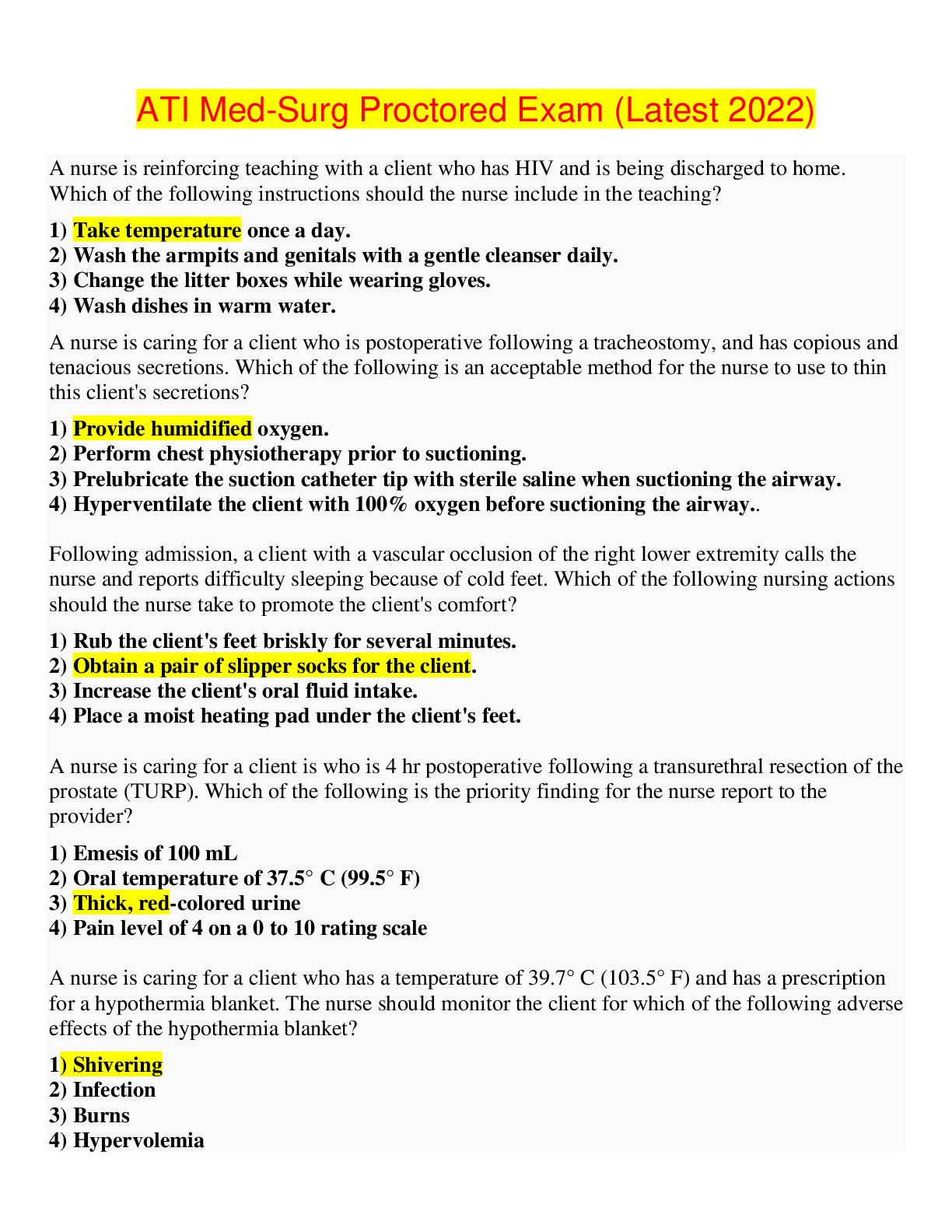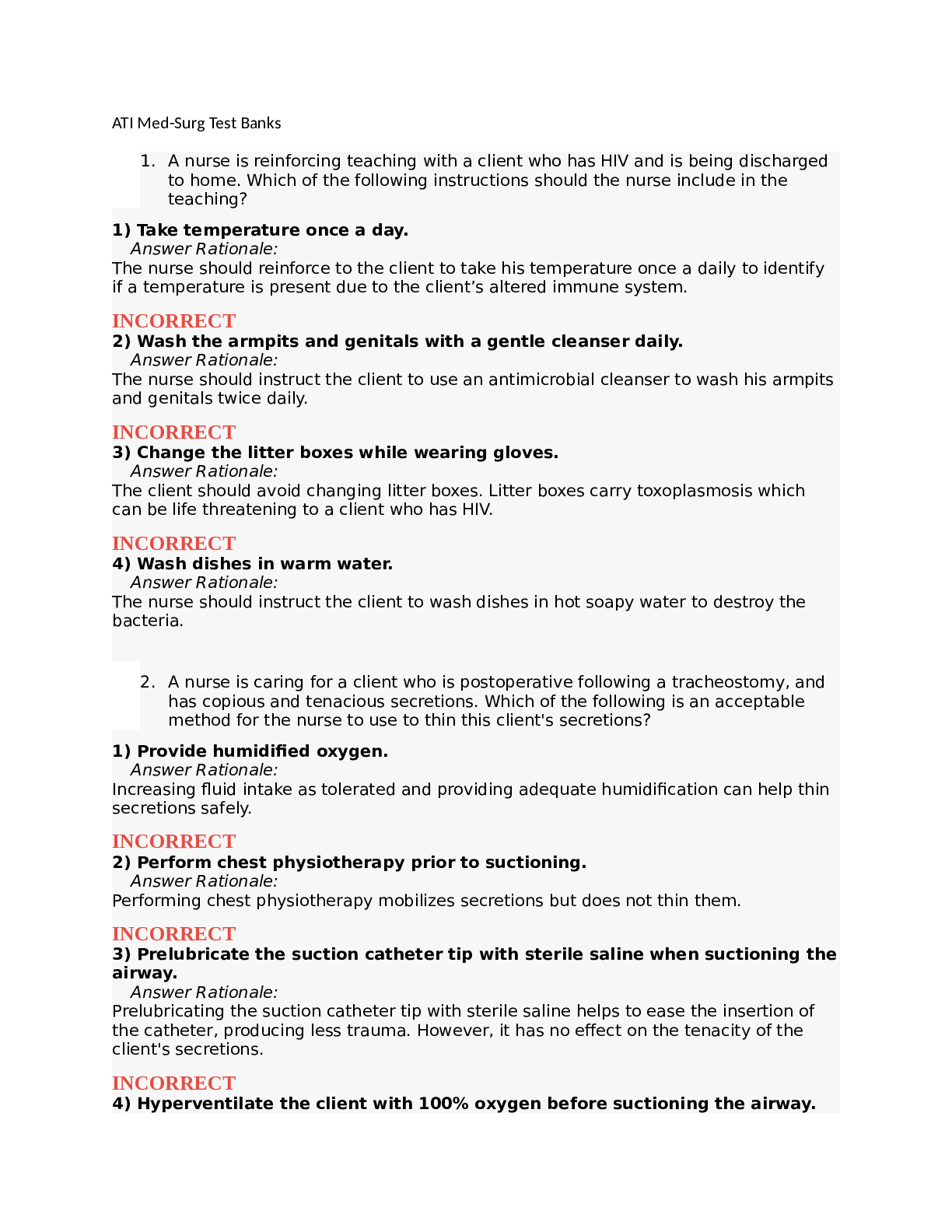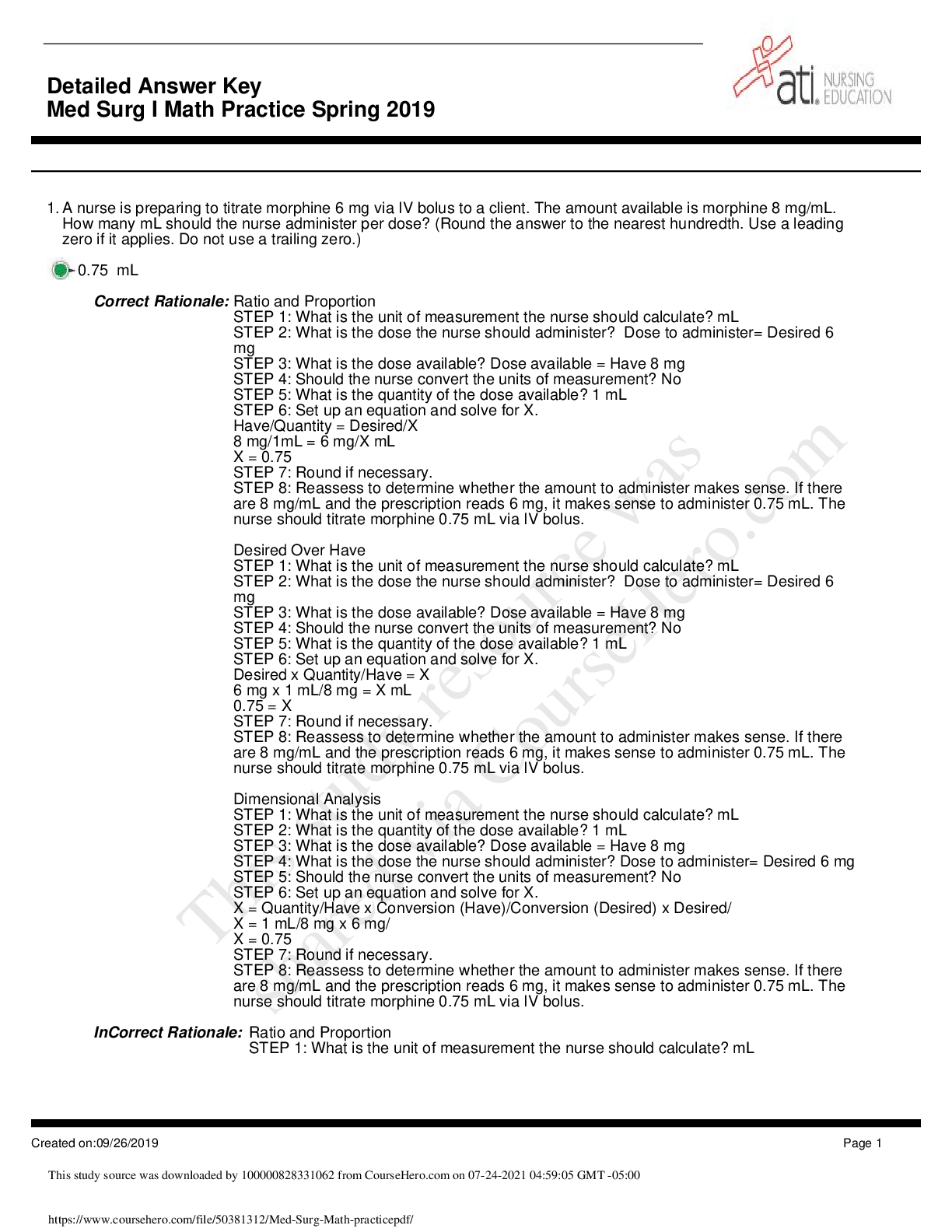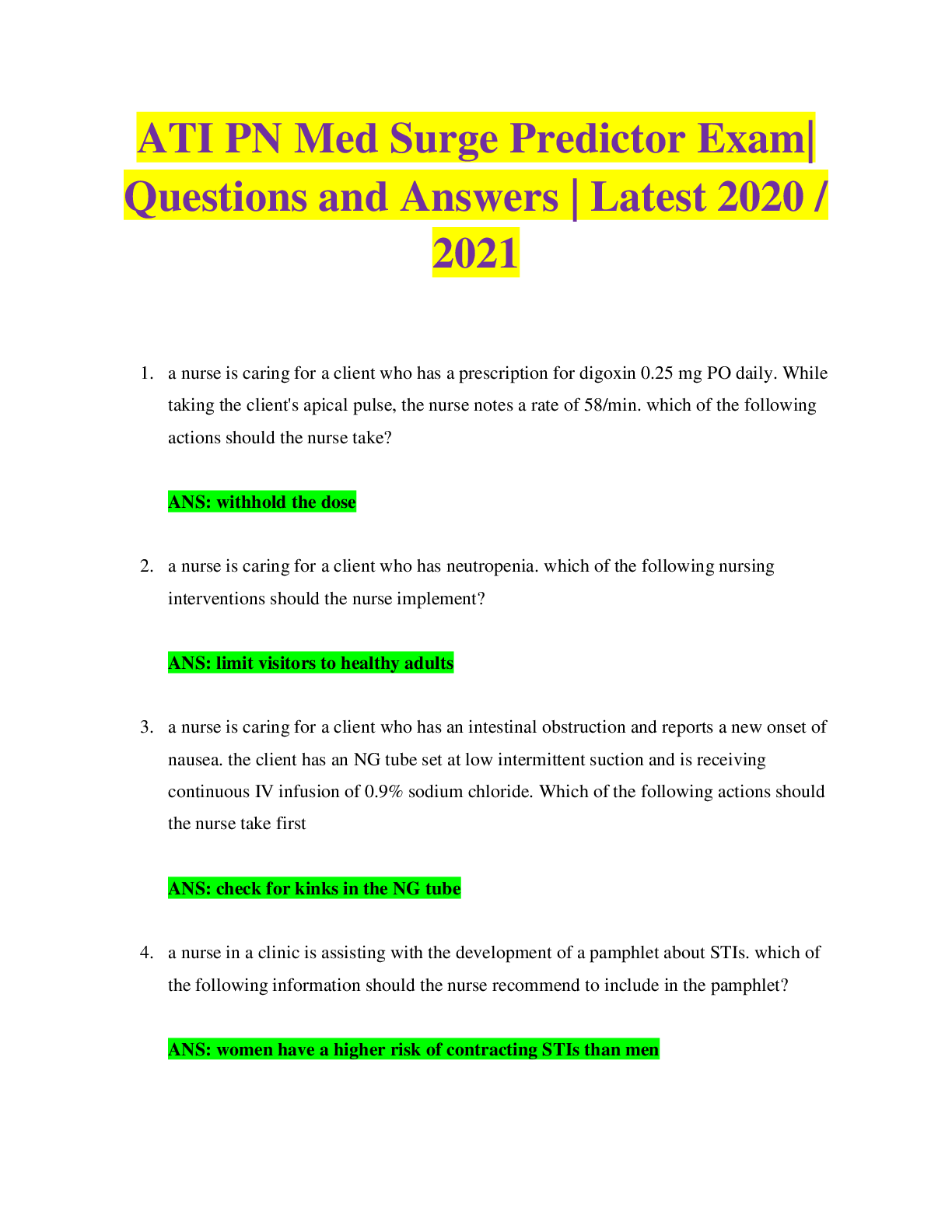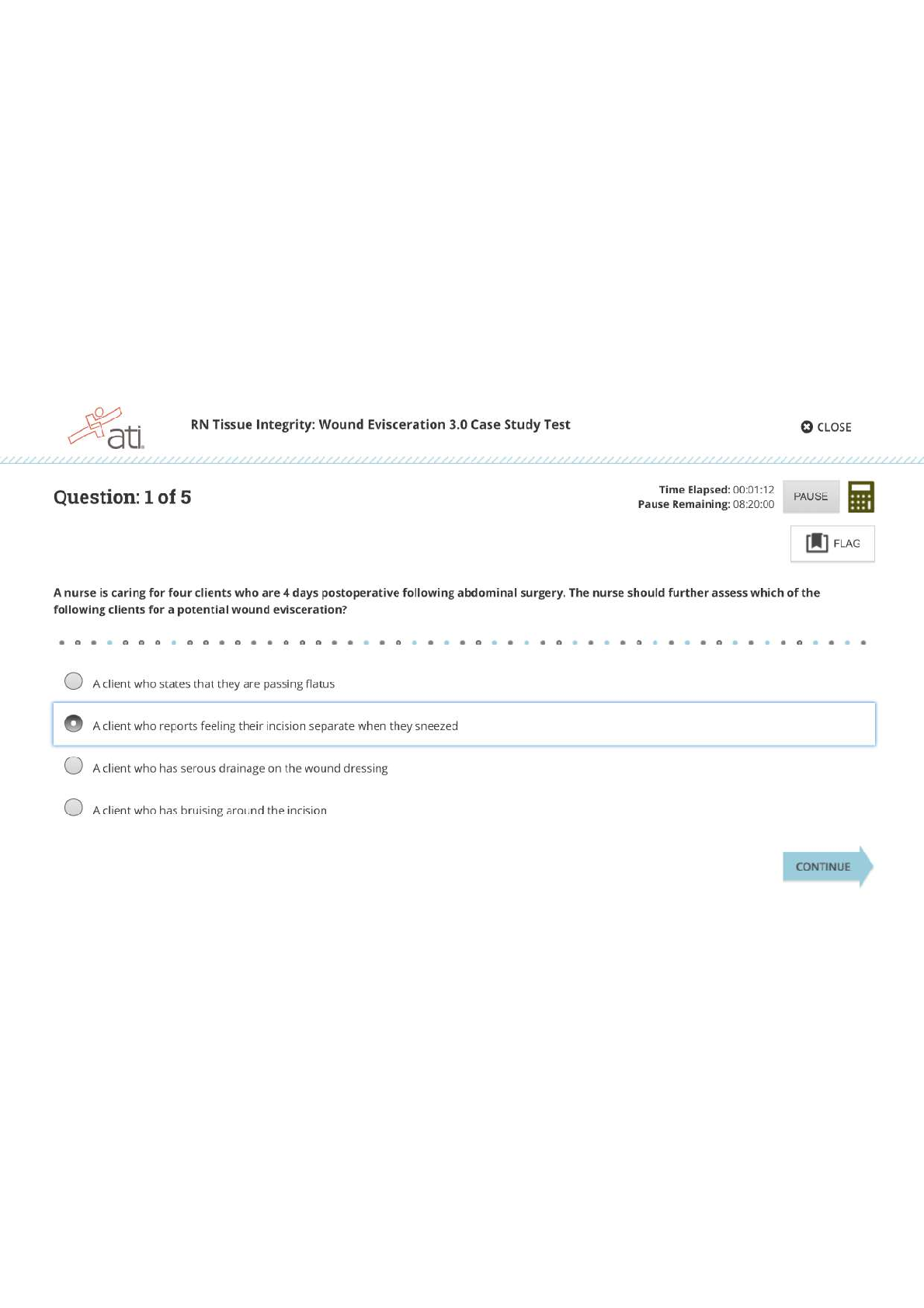*NURSING > ATI MEDICAL SURGICAL > ATI MEDSURG PRACTICE ATI- MED SURG STUDY GUIDE (All)
ATI MEDSURG PRACTICE ATI- MED SURG STUDY GUIDE
Document Content and Description Below
ATI MEDSURG PRACTICE ATI- MED SURG STUDY GUIDE 1. A patient informs the nurse that they are taking an OTC garlic supplement. What possible effect does garlic have on the body? 2. A patient ha... s a complete spinal cord injury at the third cervical vertebra. At what level would you expect the patient to respond to light sensation? 3. After placement of a permanent pacemaker what which would you report as a complication of placement? 4. How to take off a condom 5. Ph of 7.30 paCO2 49 others WNL– what are they in? 6. Left sided weakness while using a cane – what is indicative of needing further teaching? should be on stronger side) 7. What causes intrarenal failure? 8. Signs of Peripheral vascular complication? 9. A patient returns to the clinic 72 hours after receiving a subcutaneous dose of purified protein derivative (PPD) to test for tuberculosis exposure. The nurse inspects the injection site on the patient’s forearm and finds an induration measuring 12 mm. The nurse informs the client that 10. What to do after a hemolytic reaction to a blood transfusion? 11. How do you insert a PICC? 12. You are removing a peripheral inserted central catheter, which of the following would you do following removal? 13. Removing a peripheral IV catheter- 14. Patient has INR of 1.5 prior to surgery. What are you going to do? 15. Following the surgical placement of a new ileostomy, which of the following would you teach them? Rationale: Patients with a new ostomy involving the small intestine (i.e. an ileostomy) are told post-op to avoid foods that increase flatus (green leafy vegetables, beer, carbonated beverages, dairy, and corn); avoid high-fiber foods for first 2 months; CHEW FOOD WELL; increase fluid intake; and evaluate evidence of blockage. 16. A patient is on isolation due to C difficile infection; which of the following represents correct infection protection protocol? 17. A patient ____(has either a list of symptoms or a new prescription for anti-coagulant)________ during medical history they report they have been TAKING IBUPROFEN FOR 3 YEARS. What lab would you expect to be drawn? 18. A patient has been on total parenteral nutrition for 10 full days, which of the following would be an indication 19. Which of the following clients is MOST at risk for developing atelectasis? o Rationale: This patient was the only patient who had abdominal surgery; patients with abdominal surgery are at the HIGHEST risk for atelectasis because the pain from incision/surgical procedure causes them to reflexively breathe in a shallow, cautious way. Positioning (guarding) also causes decreased in lung expansion. 20. The nurse is preparing a patient for paracentesis procedure, which of the following instructions would be given to the patient to decrease the risk of perforation? 21. The nurse is providing home care for a patient receiving peritoneal dialysis, the patient has a fever of 102, and the catheter has decreased dialysate outflow. Which of the following should the nurse perform first? o Rationale: Nursing Actions regarding reduced or inadequate outflow include: repositioning the client (b/c this moves the distal lumen of the catheter which may become pressed up against the abdominal wall = obstruction); milk the tubing if a visible clot is present in the catheter; check the tubing for kinks or closed clamps, determine when the patient’s last bowel movement was (constipation can also cause low outflow, pts on peritoneal dialysis are instructed to use a stool softener daily and consume a high-fiber diet). 22. The nurse is caring for a patient with Crohn’s Disease. Which of the following would be an expected lab value for this patient? 23. The nurse is caring for a patient a patient with cancer who is hospitalized following chemotherapy and has an extremely low WBC count of 500? The family asks to bring the patient the following items, which should the nurse allow the patient to have? o Rationale: commercially prepared goods have been prepared under sterilized conditions and candy is heated to a very high temp in order to convert it to candy. 24. Gun shot wound to abdomen. What would you do to prevent acute kidney failure? 25. The nurse is assessing a patient with open-angle glaucoma, which of the following would be an expected assessment finding? o Rationale: Blurred Vision, Halos, Nausea, and Severe Pain are s/s of acute ANGLE CLOSURE GLAUCOMA, not open-angle. Open Angle Glaucoma = a disruption of structure and function of the optic nerve that causes decreased drainage of aqueous humor due to blockage. Impaired drainage of fluid increases the intra-ocular pressure (IOP) and impairs straight-line and peripheral vision. 26. A nurse is caring for a patient who is s/p knee arthroplasty, the patient reports pain and swelling at the the incision site. Which of the following non-pharmacological nursing interventions should the nurse perform to help relieve the patient’s pain? 27. A nurse is caring for a patient immediately following hip arthroplasty. Which of the following interventions should be performed in order to immobilize the joint? (Pg 761) • INCORRECT: Perform passive ROM exercises • INCORRECT: Place pillow behind the knee for support 28. A nurse is caring for a patient post-op after an appendectomy, while assessing the patient she notices bleeding on the bandages. How should the nurse measure and record the volume of blood? 29. The nurse is caring for an older adult patient immediately following a total hip arthroplasty procedure. To prevent dislocation of the hip, the nurse should do which of the following? . 30. Who would you assess first? 31. A nurse is caring for a patient who requires intubation for respiratory support. An Endotracheal tube is inserted, but the patient’s respiratory status is still compromised and the nurse suspects the tube may be in the right bronchus. How would the nurse confirm her suspicion? 32. The nurse is caring for a patient receiving radiation therapy for a malignancy. What instructions would the nurse give the patient regarding the care of the site following the radiation treatment? Pg1004 o Rationale: Patient’s receiving external radiation therapy (ERT) are instructed to wash the area with mild soap or water, gently pat the area dry. They are told to be careful not to wash off the radiation “tattoos” which are skin markings that mark where to apply the radiation. Patients are also advised to wear soft, loose, non-restrictive clothing which implies an occlusive dressing is contraindicated as well. They are instructed not to apply any lotions, perfumes, powders, or deodorants to the site. 33. When performing a wound culture of a wound with eschar and exudate; using a sterile cotton swab, the culture should be obtained by: 34. The nurse is performing wound care for a patient whose wound requires debridement using wet-to-dry packing. What type of debridement is this considered. 35. Instructions for a post op thyroidectomy patient. 36. Positive Trousseau sign. What electrolyte imbalance is occurring? 37. Click on the exhibit to view the patient record and answer the question. According to the exhibit, which medication would you hold? 38. eaching regarding TB meds. 39. The nurse is caring for a patient newly prescribed metformin. What instructions should the nurse include? 40. The nurse is caring for a patient who is experiencing thyroid storm. Which of the following would you expect to be done: 41. Myxedema 42. Urography findings? 43. Diabetes/ PVD foot care? 44. Which of the following would require airborne precautions? 45. Lupus question 46. Raynaud’s phenomenon 47. Would evisceration 48. Administering Digioxin, what’s a finding to report to provider immediately? 49. 3rd degree heart block, what do you do? 50. Afib – what drug would you give? 51. Lisinopril 52. The nurse is caring for a patient who has a new prescription for metoprolol “Lopressor” (Beta Blocker) What would the nurse monitor for. 53. How do you irrigate an ear? 54. Care of a stroke patient? 55. Which mask delivers 70% O2? • ) 56. What would you teach a group of radiation patients and what to avoid? Pg. 1005 57. What would you delegate to LPN regarding TURP? 58. You’re going to administer meds through a peripheral line with continuous fluids running. After determining compatibility what would you do? 59. What would you teach a patient getting Chemo about her picc line? 60. Which is indicative of decreased cardiac output? 61. Peptic ulcer disease. How do you know there is a perforation? [Show More]
Last updated: 1 year ago
Preview 1 out of 6 pages
.png)
Reviews( 0 )
Document information
Connected school, study & course
About the document
Uploaded On
Feb 03, 2021
Number of pages
6
Written in
Additional information
This document has been written for:
Uploaded
Feb 03, 2021
Downloads
0
Views
44

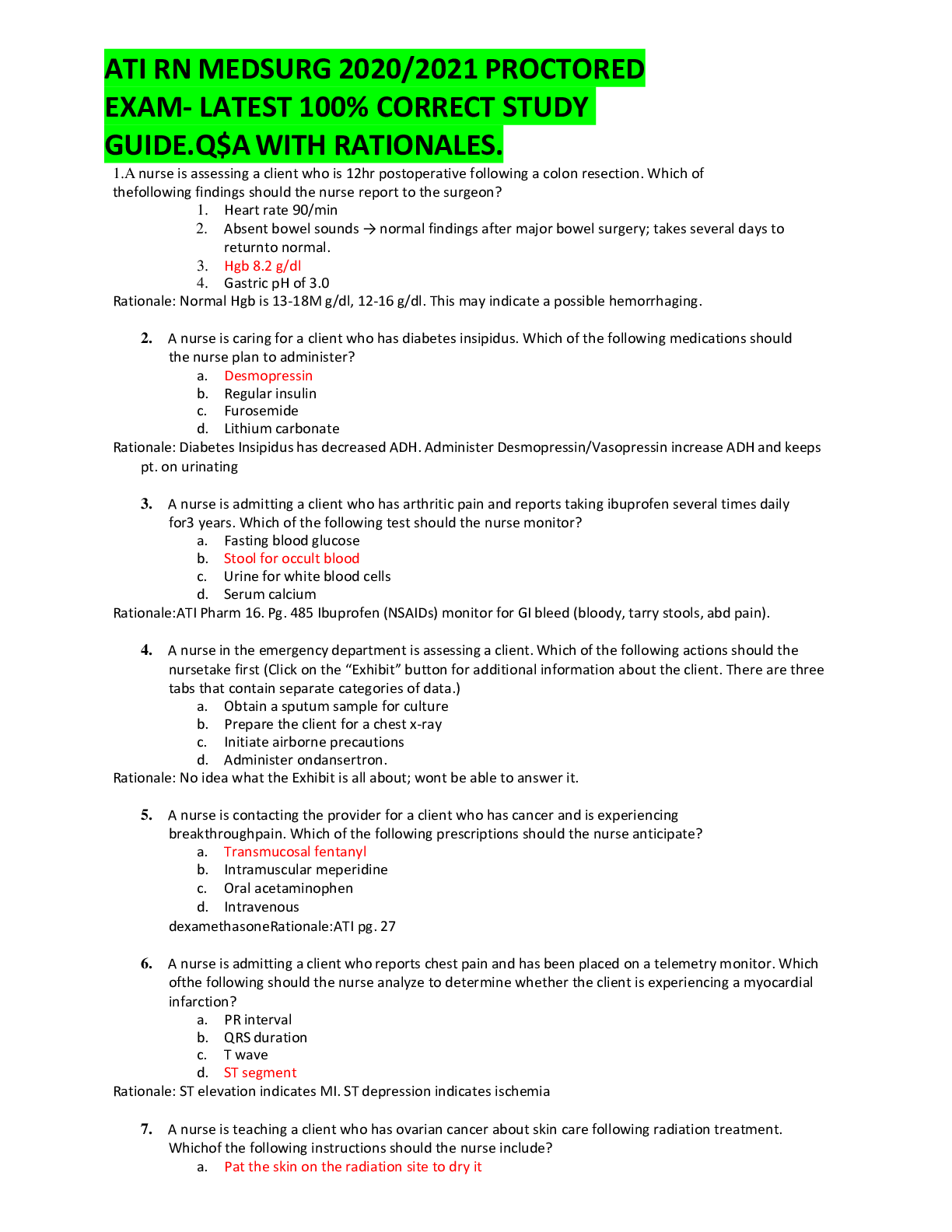
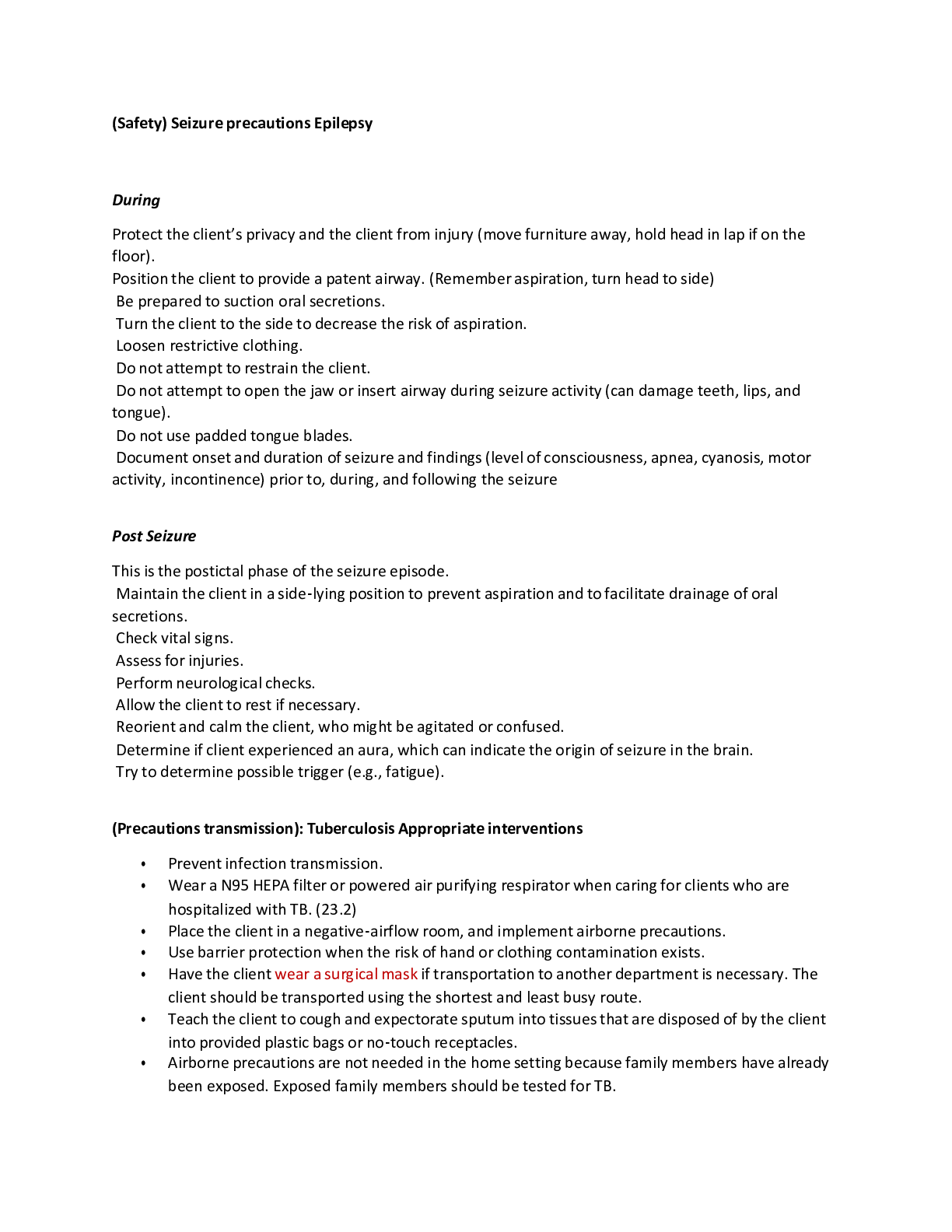

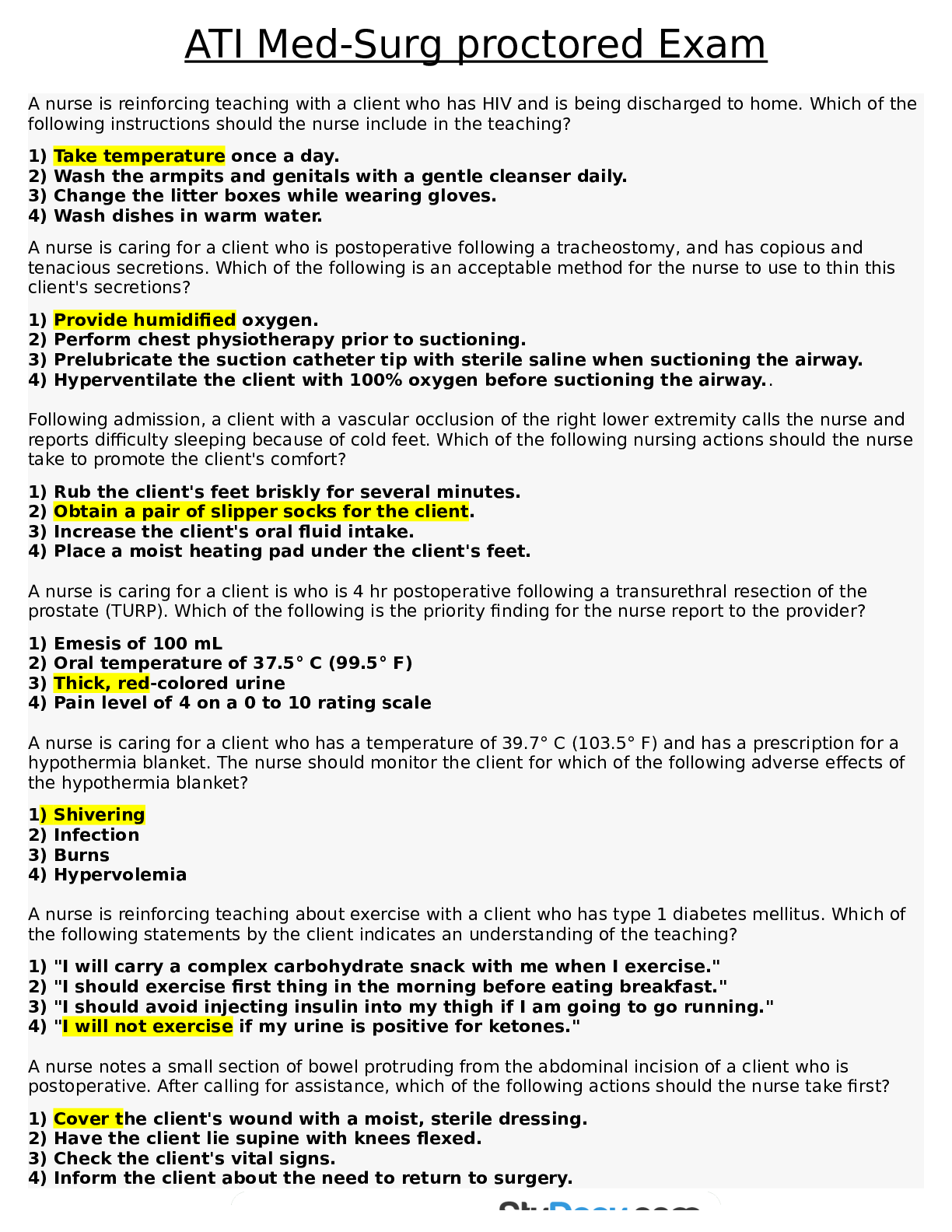

 (1).png)
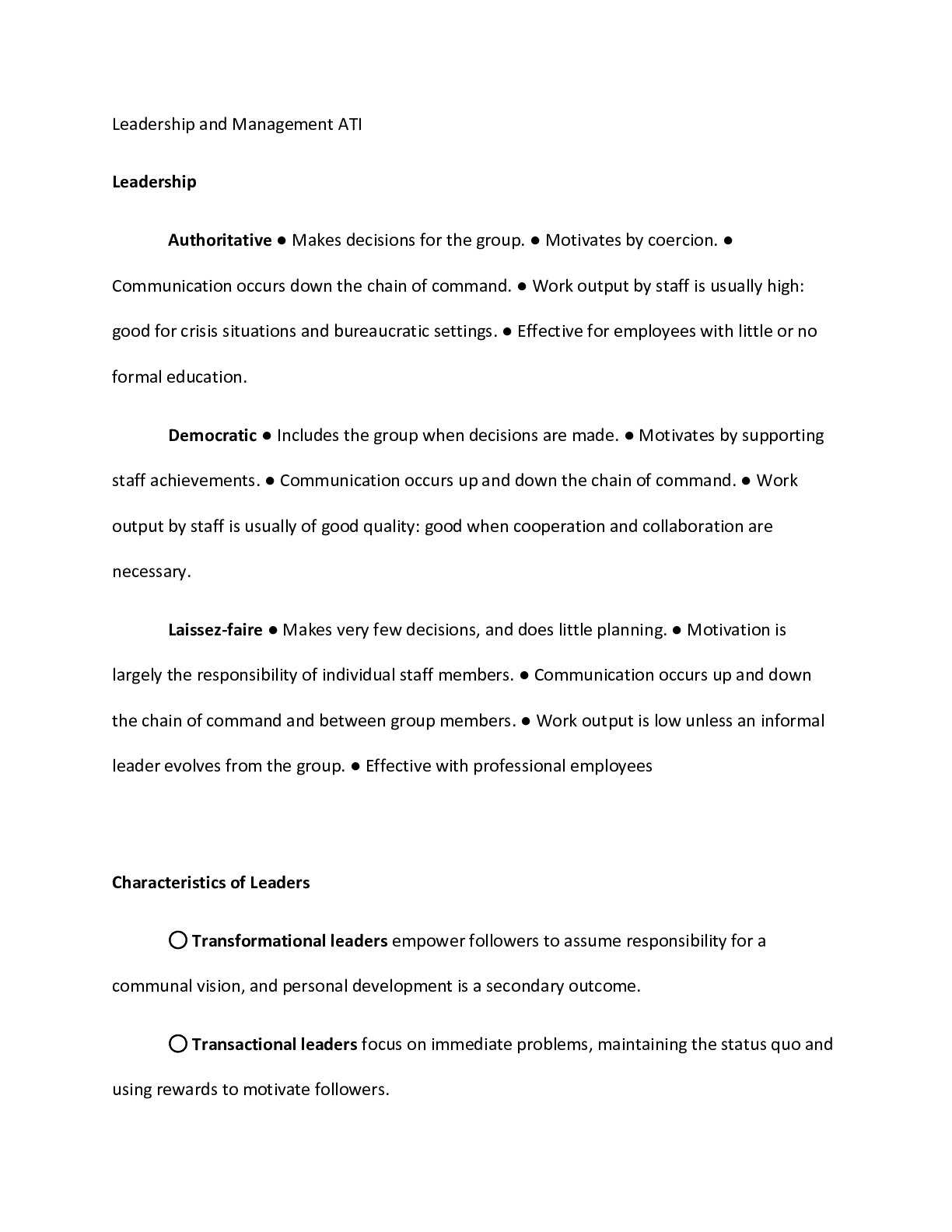
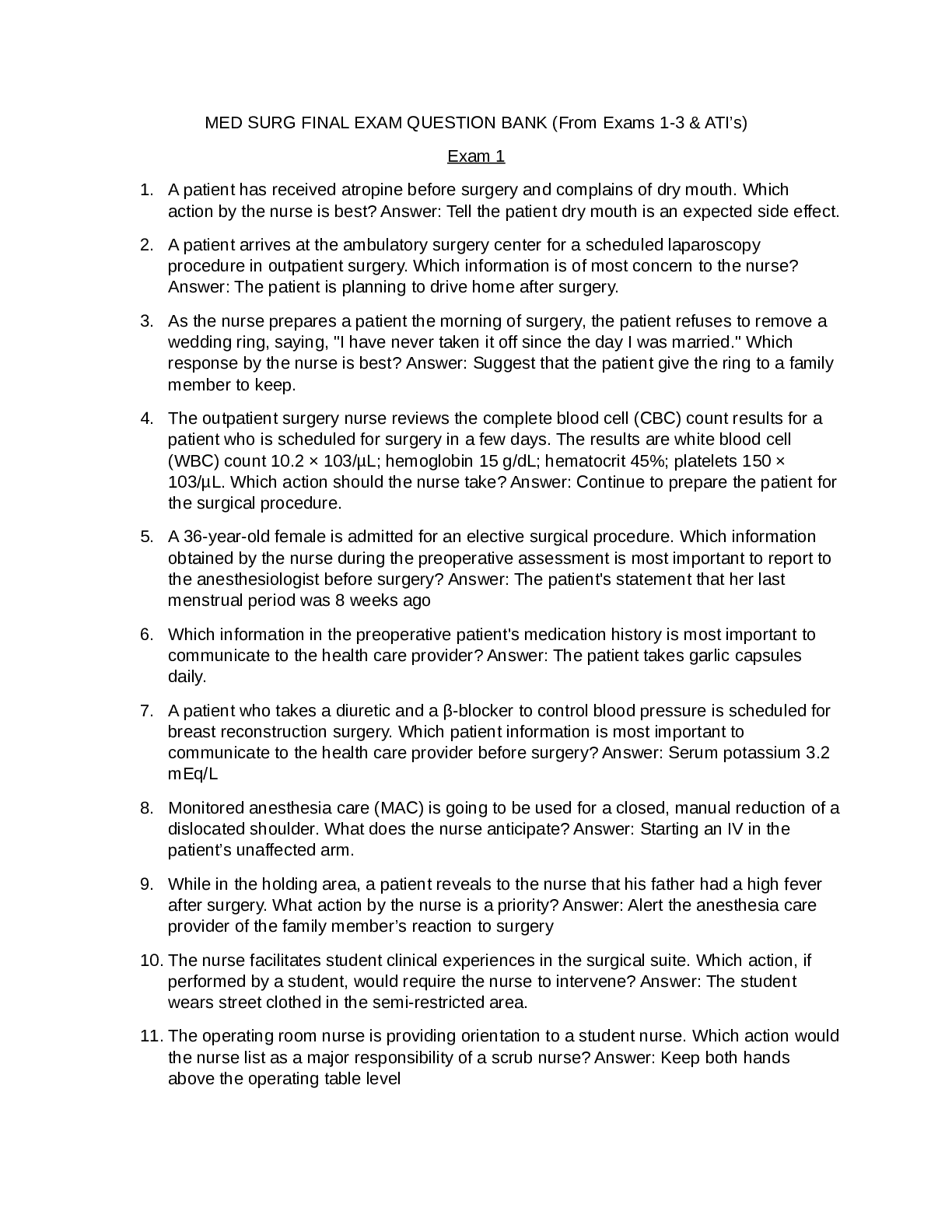

.png)
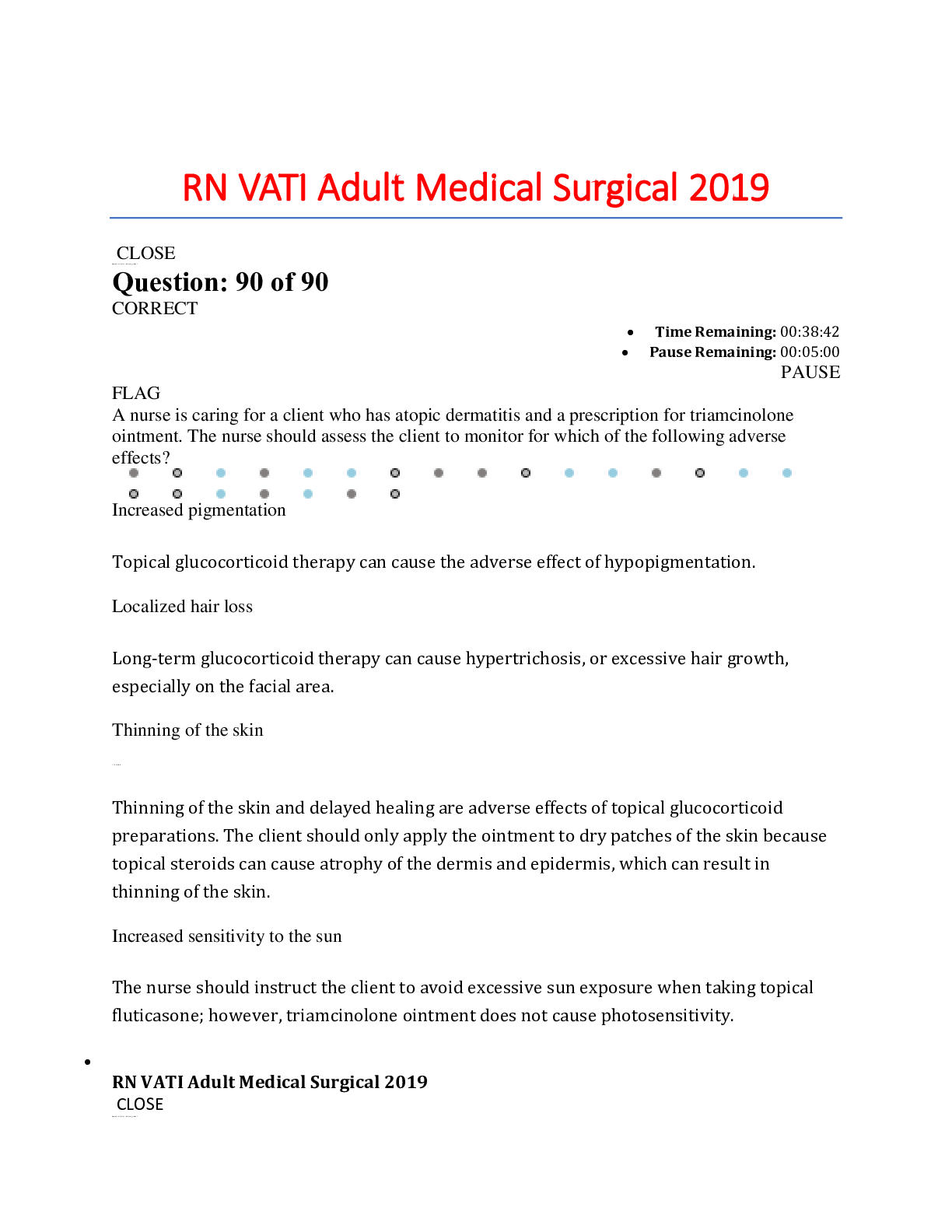
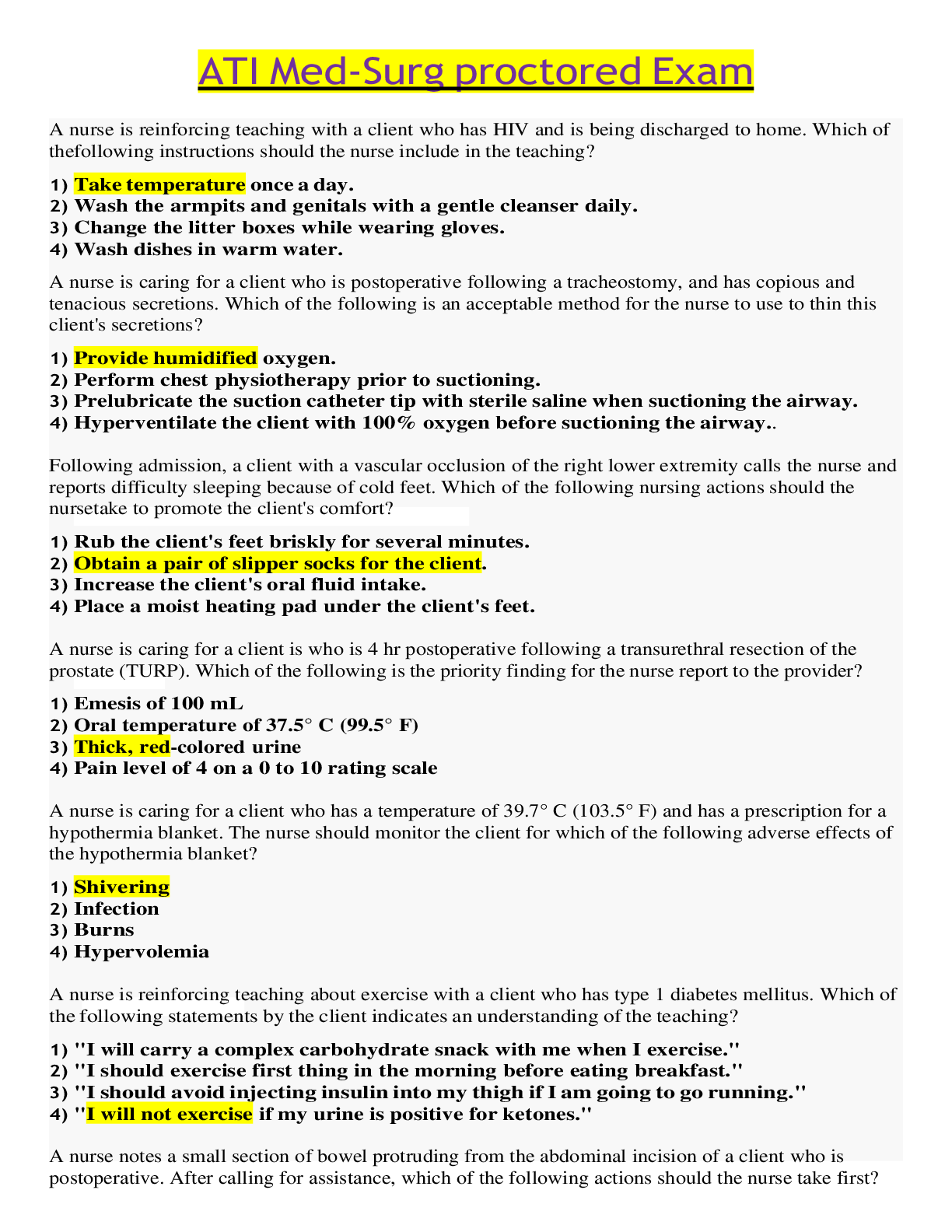
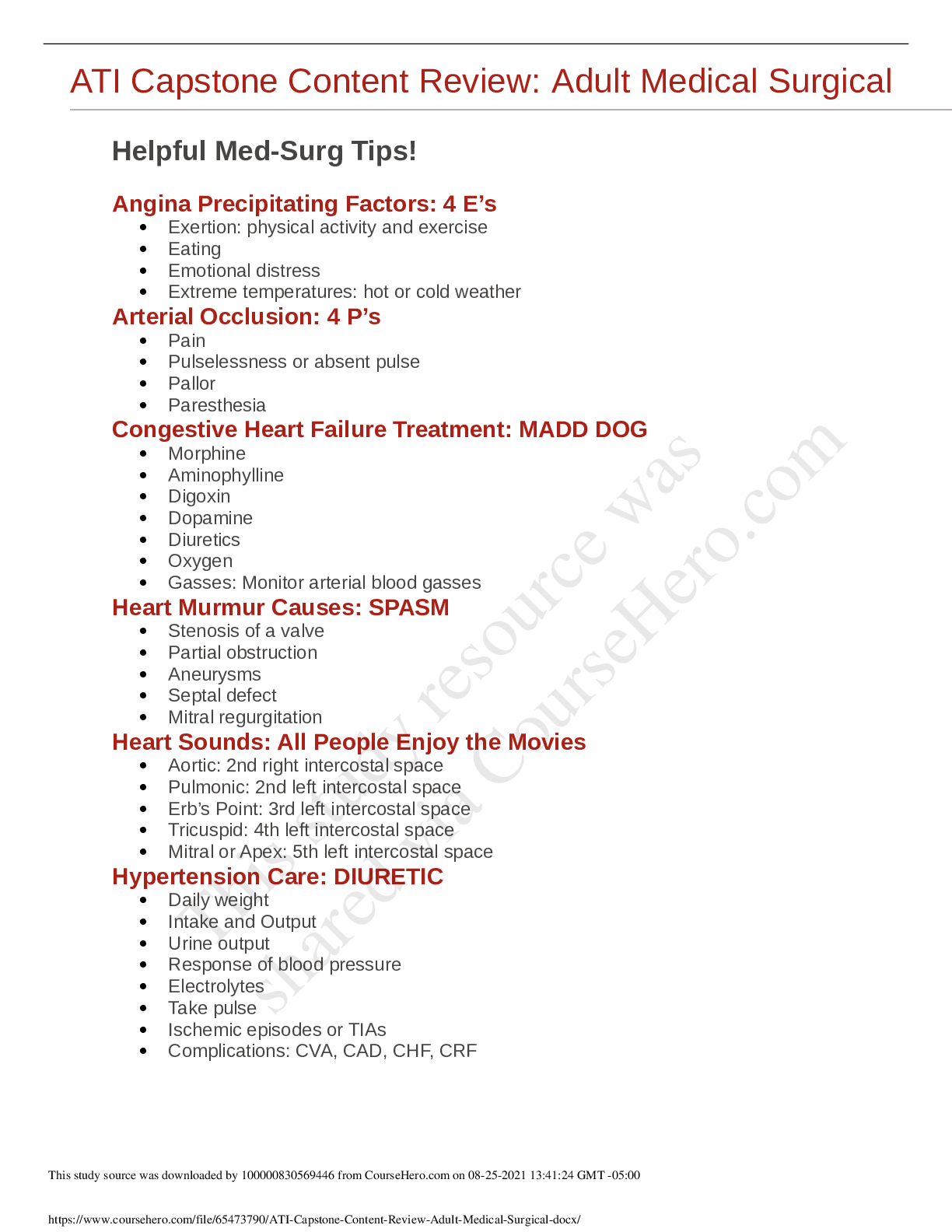

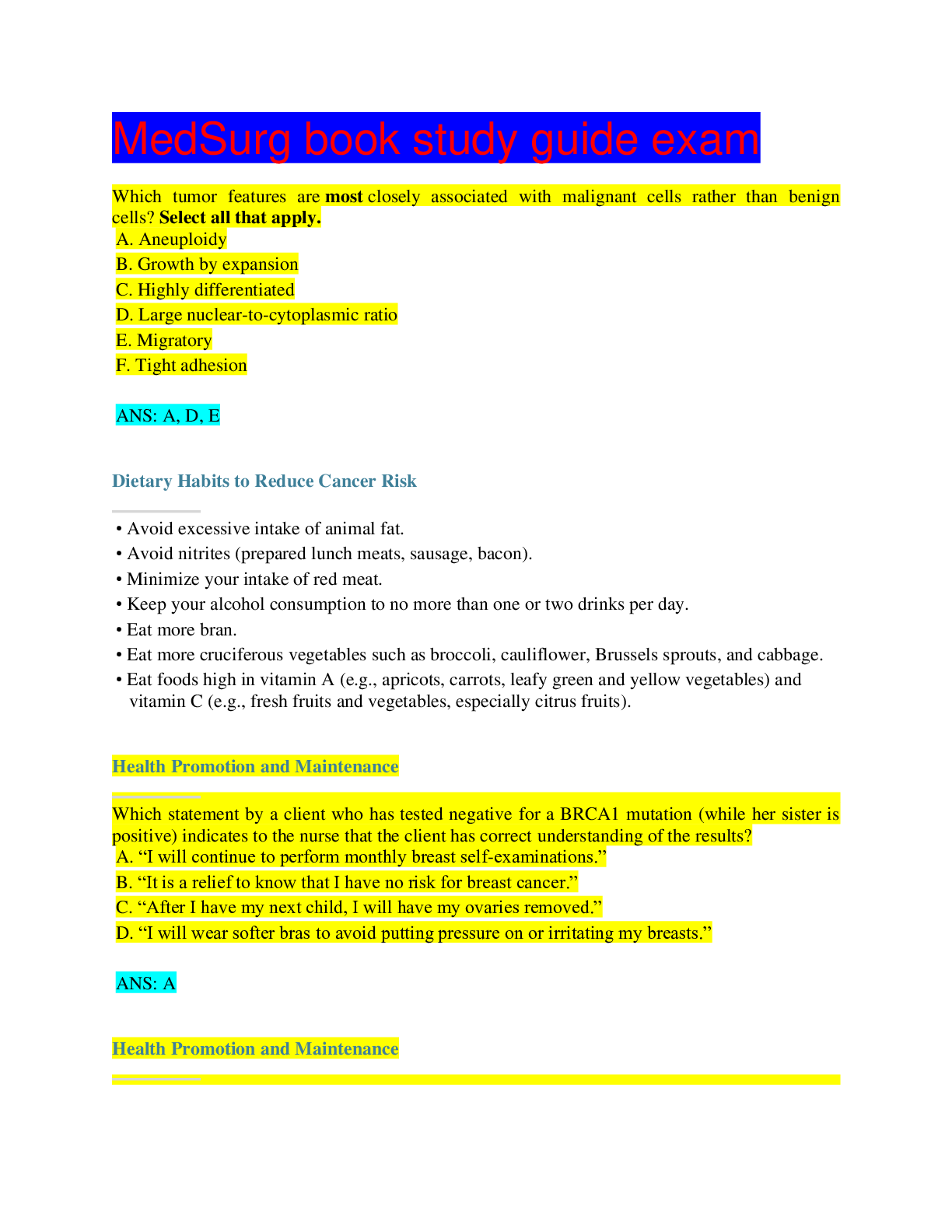
.png)
ATI MED SURG STUDY GUIDE-NUR1234.png)

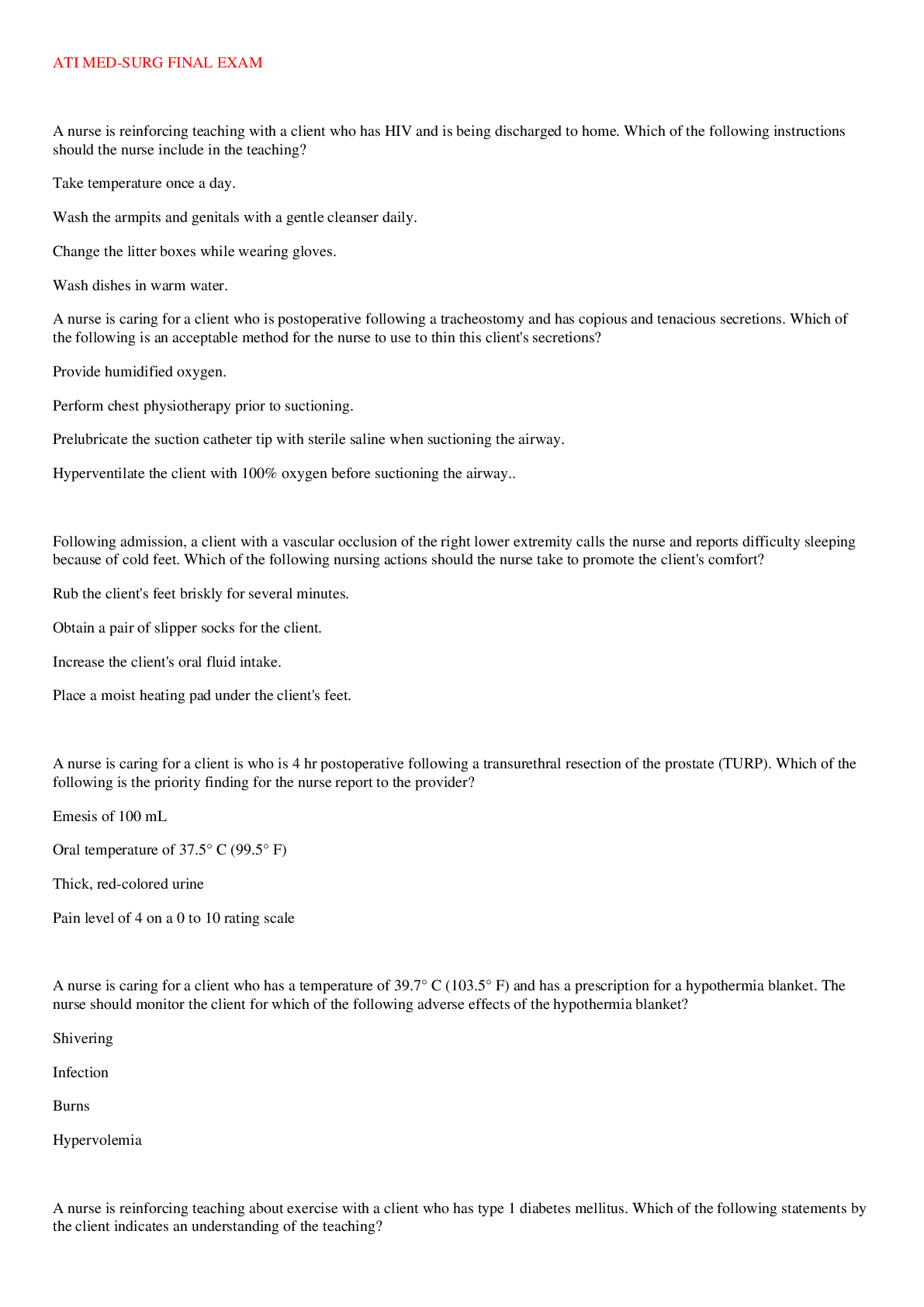
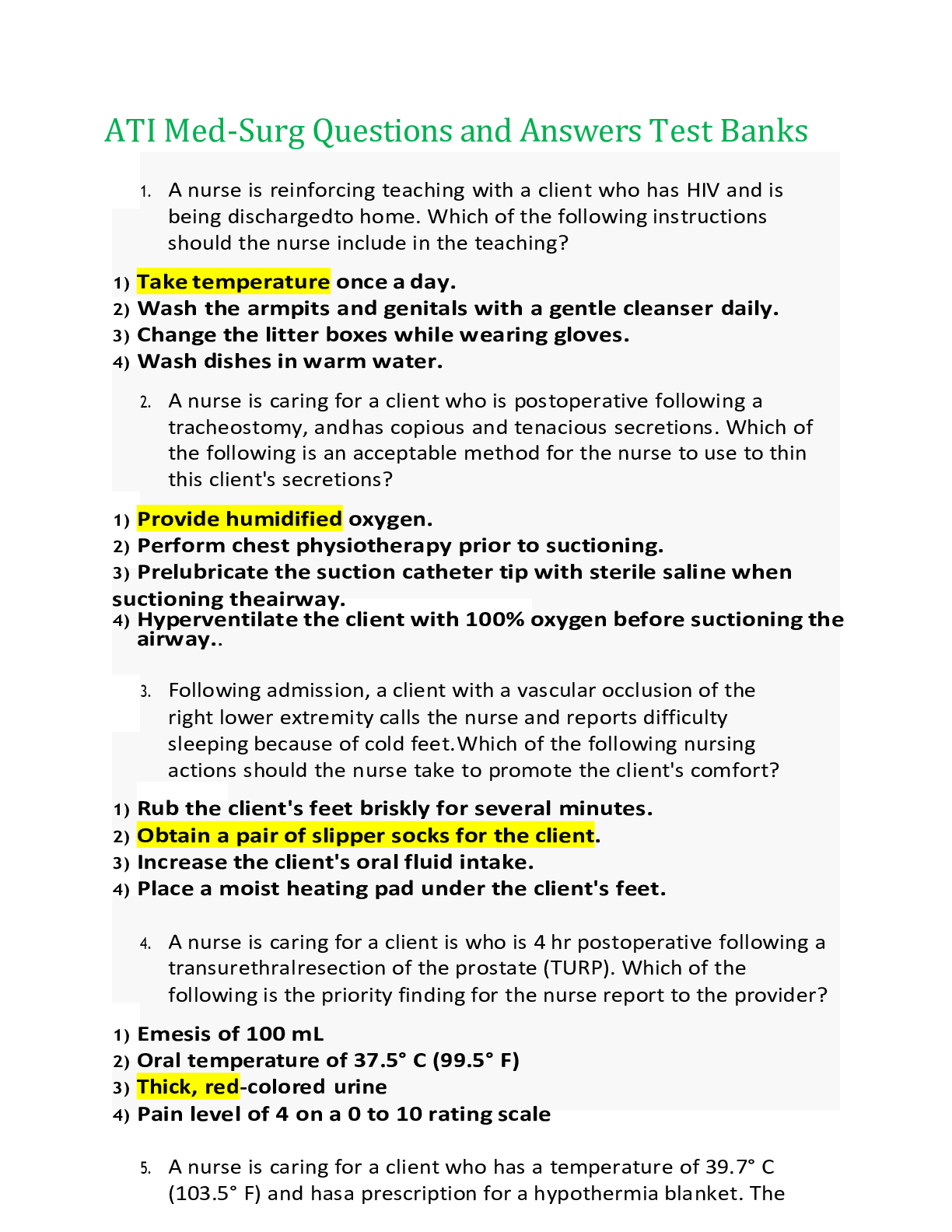
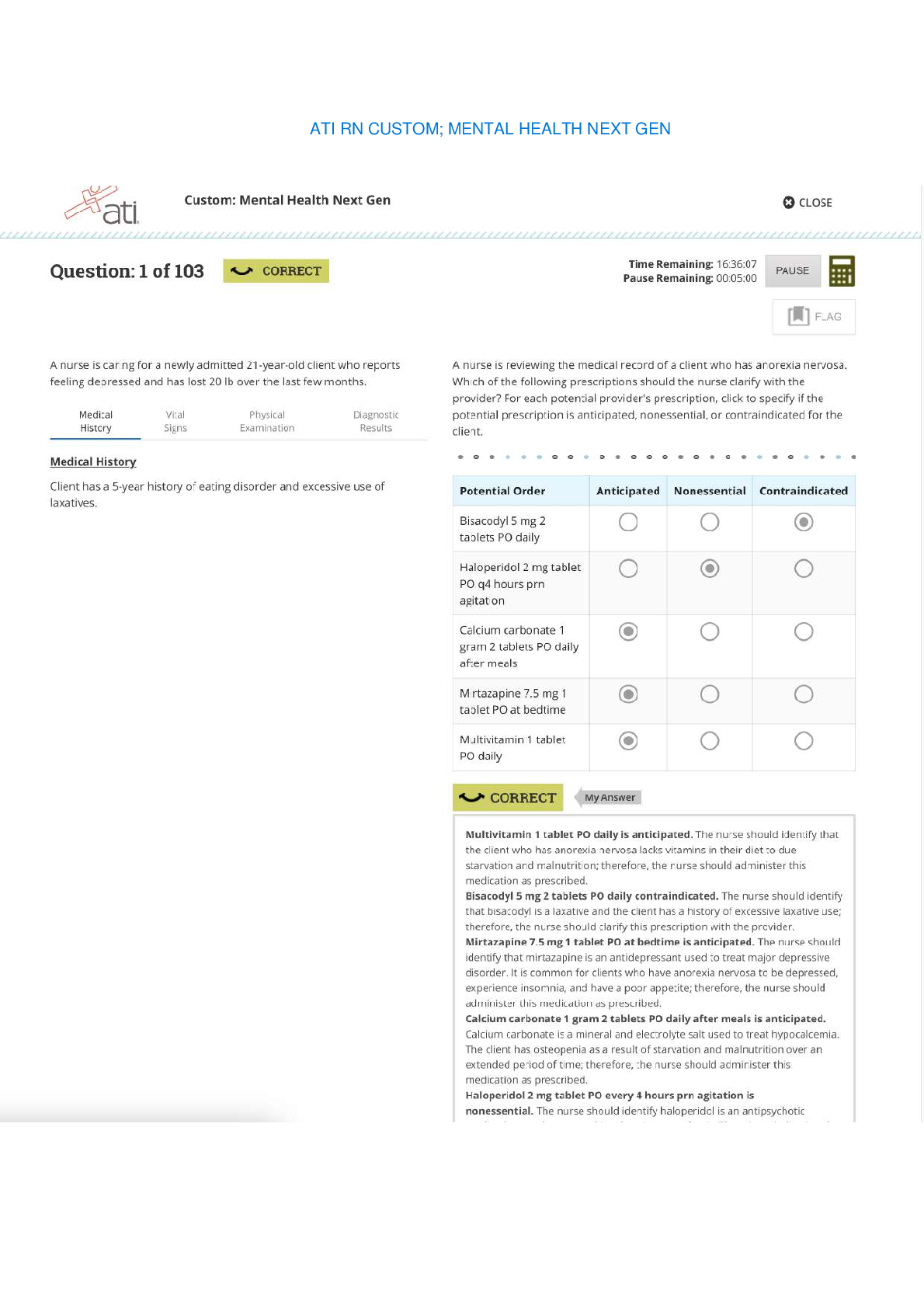
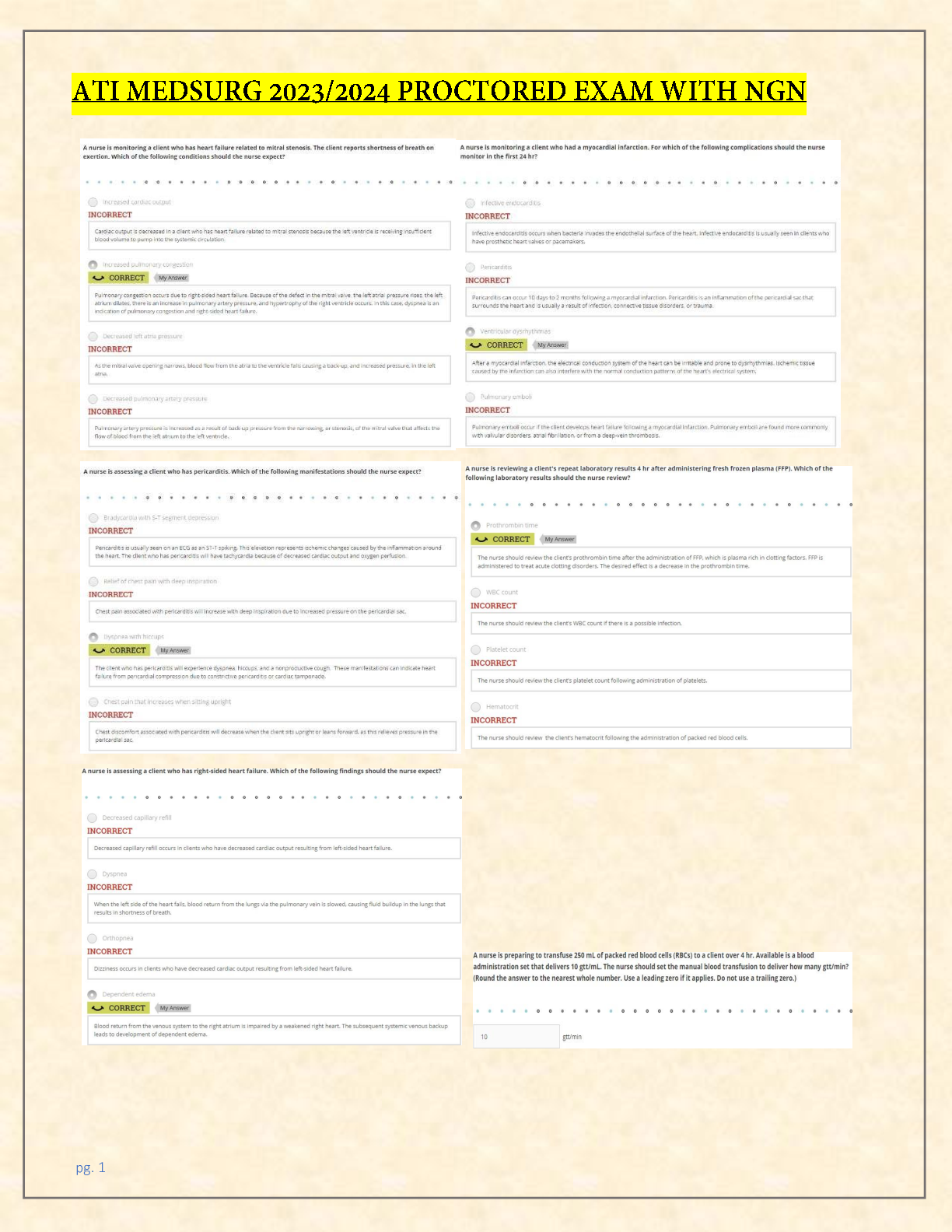
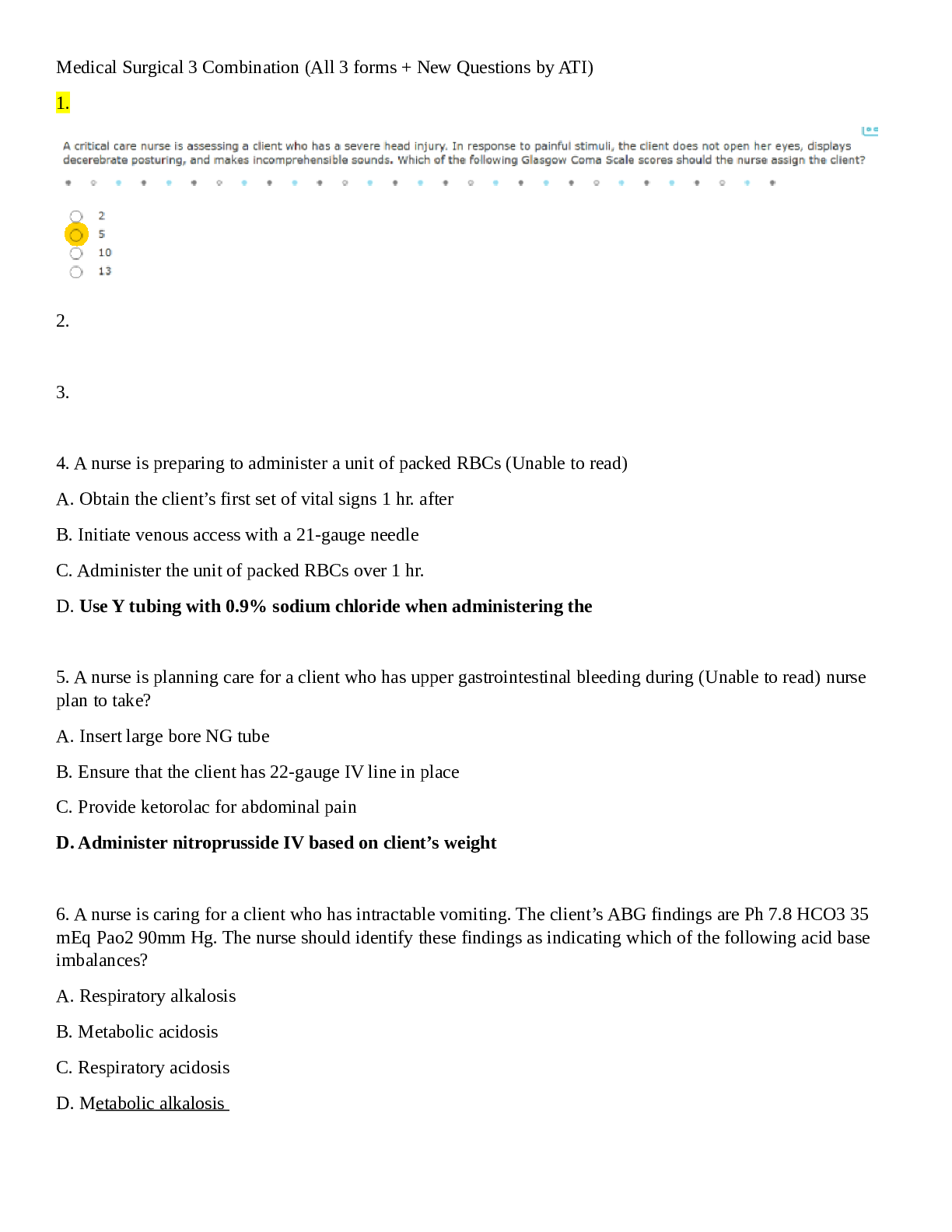
 – Chamberlain College of Nursing.png)
